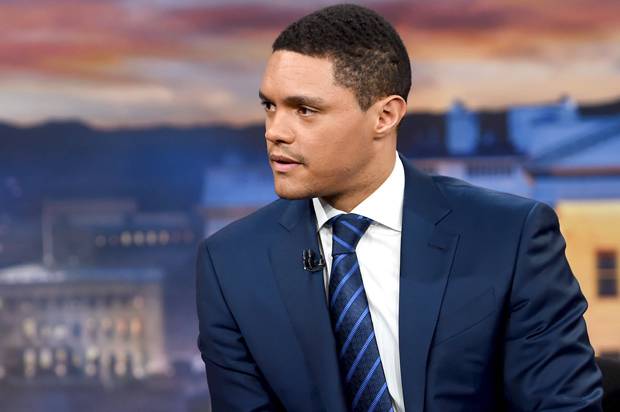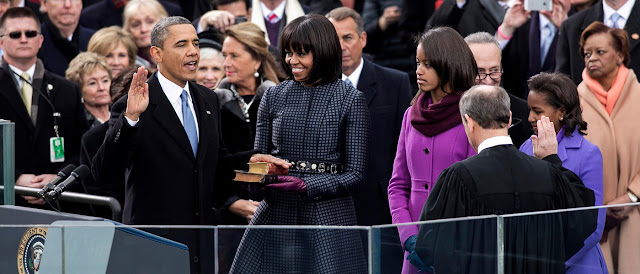Landing the Job
Originally published on the Suits Unlimited Blog May 6, 2016
For many people, the only time they'll need a suit is for job interviews, weddings, and the unfortunate-but-inevitable funeral. However, the what’s and the how’s of the first subject tend to elude many men. Fortunately, we can show you what to wear and how to wear it.
Your suit should be dark but not black. Solid charcoal or navy are your safest bets. There have been many debates about which one to wear to a first and second interview. The general synopsis is to avoid wearing the same one twice in a row if possible. Avoid earth colors, stripes, patterns, or double breasted suits. Two button suits are a good choice for any body type since it creates an elongating "V" of shirt and tie. Keep the top button fastened while standing and undo the button when you sit. Ensure the back of the jacket is free of wrinkles and the pants have a good crease before putting them on.
A white shirt makes the best impact but pale blue also works well. Point or spread collars are the optimal choice as button-down collars can look too casual. Cutaway collars may also be tempting but they can look overly fashionable. If going for an executive position (or applying to a clothing store like ours) French cuffs can be okay, otherwise keep the cufflinks at home. As with your suit it should look crisp. Take some time to press a couple shirts at home the night before the interview. You might be requested for a second one, after all.
Ties should be kept conservative, like textured solids, simple patterns (such as light dots on a dark ground), or stripes. Blue, red, black, and combinations of those colors tend to do well. If in doubt for which tie knot to use, the guideline of the wider the collar wider the knot is good to follow. For example, a moderate spread collar with a half-Windsor knot. If you need guidance on how to tie a tie, watch our how to videos here.
Belts and shoes are not rocket science, just match the color of the leather and keep them conservative. Now is not the time to show off your shiny plaque buckle belt and slip-on square toed shoes. A classic dress belt and lace-up cap toes will give you a lot more mileage anyway. Black is the color of choice. Why? It connotes a professional and formal attitude than brown or burgundy. Polish your shoes before you head to the interview, as it will show an attention to detail. (Alternatively, our shoeshine valet is available Monday through Friday, 10AM-3PM if you want the best possible shine.)
This should go without saying, but your hair should be neatly styled. Get a fresh shave or trim any facial hair to a professional look if the workplace permits it. Avoid cologne or body spray since many companies have a no-scent policy.
Finally, RELAX! You're going to do great. Hopefully, the confidence gained from being well dressed will translate to confidence when answering questions. Good luck!
For many people, the only time they'll need a suit is for job interviews, weddings, and the unfortunate-but-inevitable funeral. However, the what’s and the how’s of the first subject tend to elude many men. Fortunately, we can show you what to wear and how to wear it.
Your suit should be dark but not black. Solid charcoal or navy are your safest bets. There have been many debates about which one to wear to a first and second interview. The general synopsis is to avoid wearing the same one twice in a row if possible. Avoid earth colors, stripes, patterns, or double breasted suits. Two button suits are a good choice for any body type since it creates an elongating "V" of shirt and tie. Keep the top button fastened while standing and undo the button when you sit. Ensure the back of the jacket is free of wrinkles and the pants have a good crease before putting them on.
A white shirt makes the best impact but pale blue also works well. Point or spread collars are the optimal choice as button-down collars can look too casual. Cutaway collars may also be tempting but they can look overly fashionable. If going for an executive position (or applying to a clothing store like ours) French cuffs can be okay, otherwise keep the cufflinks at home. As with your suit it should look crisp. Take some time to press a couple shirts at home the night before the interview. You might be requested for a second one, after all.
Ties should be kept conservative, like textured solids, simple patterns (such as light dots on a dark ground), or stripes. Blue, red, black, and combinations of those colors tend to do well. If in doubt for which tie knot to use, the guideline of the wider the collar wider the knot is good to follow. For example, a moderate spread collar with a half-Windsor knot. If you need guidance on how to tie a tie, watch our how to videos here.
Belts and shoes are not rocket science, just match the color of the leather and keep them conservative. Now is not the time to show off your shiny plaque buckle belt and slip-on square toed shoes. A classic dress belt and lace-up cap toes will give you a lot more mileage anyway. Black is the color of choice. Why? It connotes a professional and formal attitude than brown or burgundy. Polish your shoes before you head to the interview, as it will show an attention to detail. (Alternatively, our shoeshine valet is available Monday through Friday, 10AM-3PM if you want the best possible shine.)
This should go without saying, but your hair should be neatly styled. Get a fresh shave or trim any facial hair to a professional look if the workplace permits it. Avoid cologne or body spray since many companies have a no-scent policy.
Finally, RELAX! You're going to do great. Hopefully, the confidence gained from being well dressed will translate to confidence when answering questions. Good luck!
 |
| Trevor Noah, without meaning to, demonstrates a very interview-appropriate suit, shirt, and tie. |


Comments
Post a Comment